The curlew is by far the more common of the two birds, breeding on moorlands, hill pastures and hay meadows in upland areas of north and west Britain. There are also smaller populations nesting on coastal marshes, bogs, floodplains, lowland farmland, heaths and downs.
In Ireland, the curlew is more widely but sparsely distributed. In winter, most leave their breeding areas to gather in flocks on and near all coasts, where their numbers are boosted by continental immigrants.
In the British Isles, the whimbrel breeds only in northern Scotland. Otherwise, it is a regular spring and autumn passage migrant, occurring in varying numbers. It is usually seen in small or smallish flocks along most coasts and at inland reservoirs.
(Eurasian) Curlew
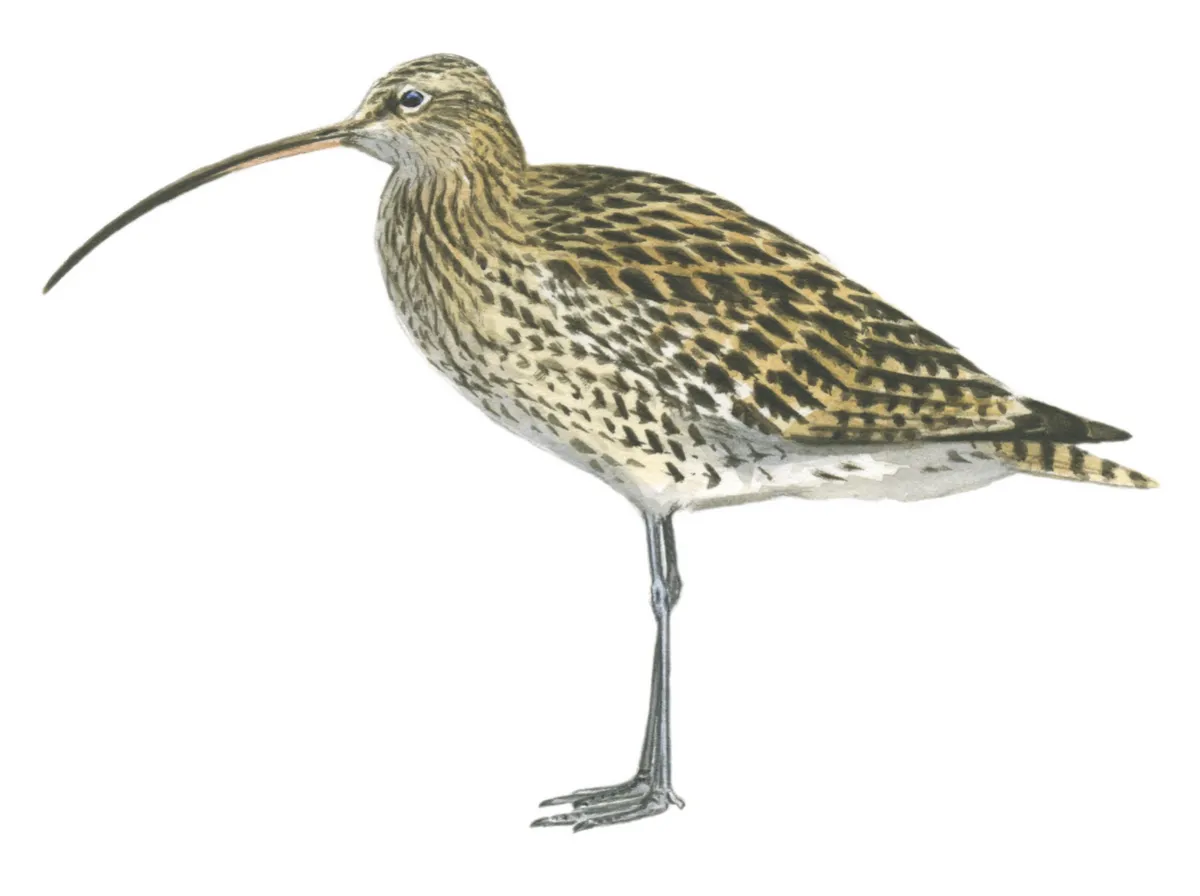
Scientific name: Numenius arquata
UK conservation status: Red
IUCN Red List status: Near Threatened
Size: Our biggest wader - bigger than an oystercatcher.
Bill: Very long, distinctively and quite evenly downcurved gill, longest in females.
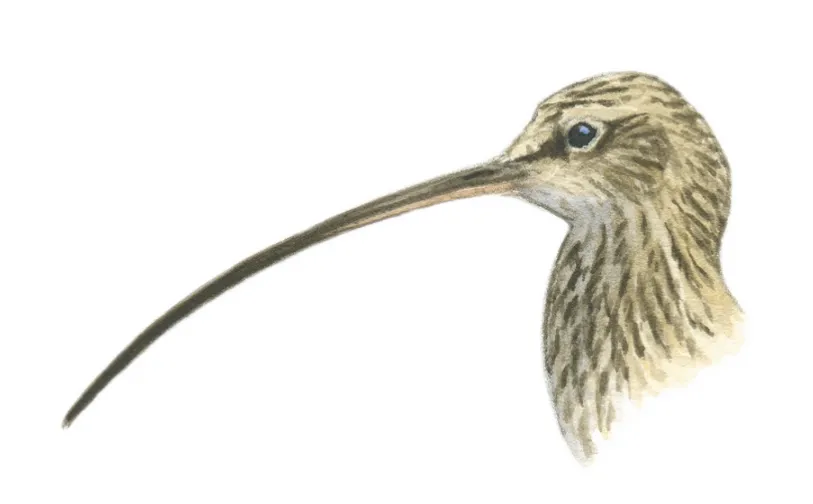
Plumage: Densely streaked buff-brown to grey-brown plumage, no head pattern. White rump and 'V' on back aren't as clean as on a whimbrel.
Legs: Long, sturdy legs.
Call: Most frequent calls are a loud, ringing 'coot-lee' and a sad 'whaaaup'; less frequent is a quick, harsh 'kvi-kvi-kvi' alarm call. Full spring song, given by male in an undulating display flight, is a glorious, wild sequence of liquid notes rising to a crescendo and ending in an ecstatic bubbling trill.
Behaviour: Probes deeply in the mud or sand for crabs and other prey. In winter, flocks fly quite high in chevrons or ragged lines with gull-like wing action.
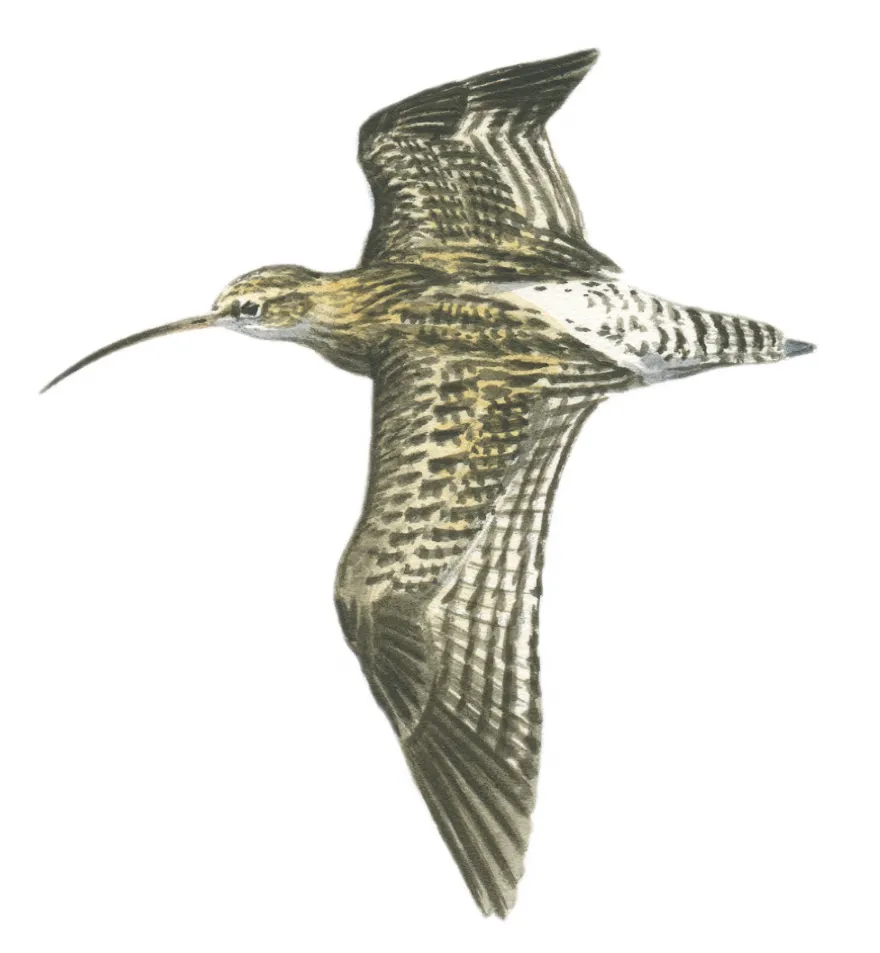
Why is the curlew red-listed in the UK?
In 2017 update of the State of the UK's Birds report, it was revealed that the UK population of curlews has suffered a decline of 64 per cent in the last 45 years.
"Curlews are instantly recognisable on winter estuaries or summer moors by their striking long, curved beak, long legs and evocative call," said RSPB's Dr Daniel Hayhow. "They are one of our most charistmatic birds and also one of our most important."
Whimbrel
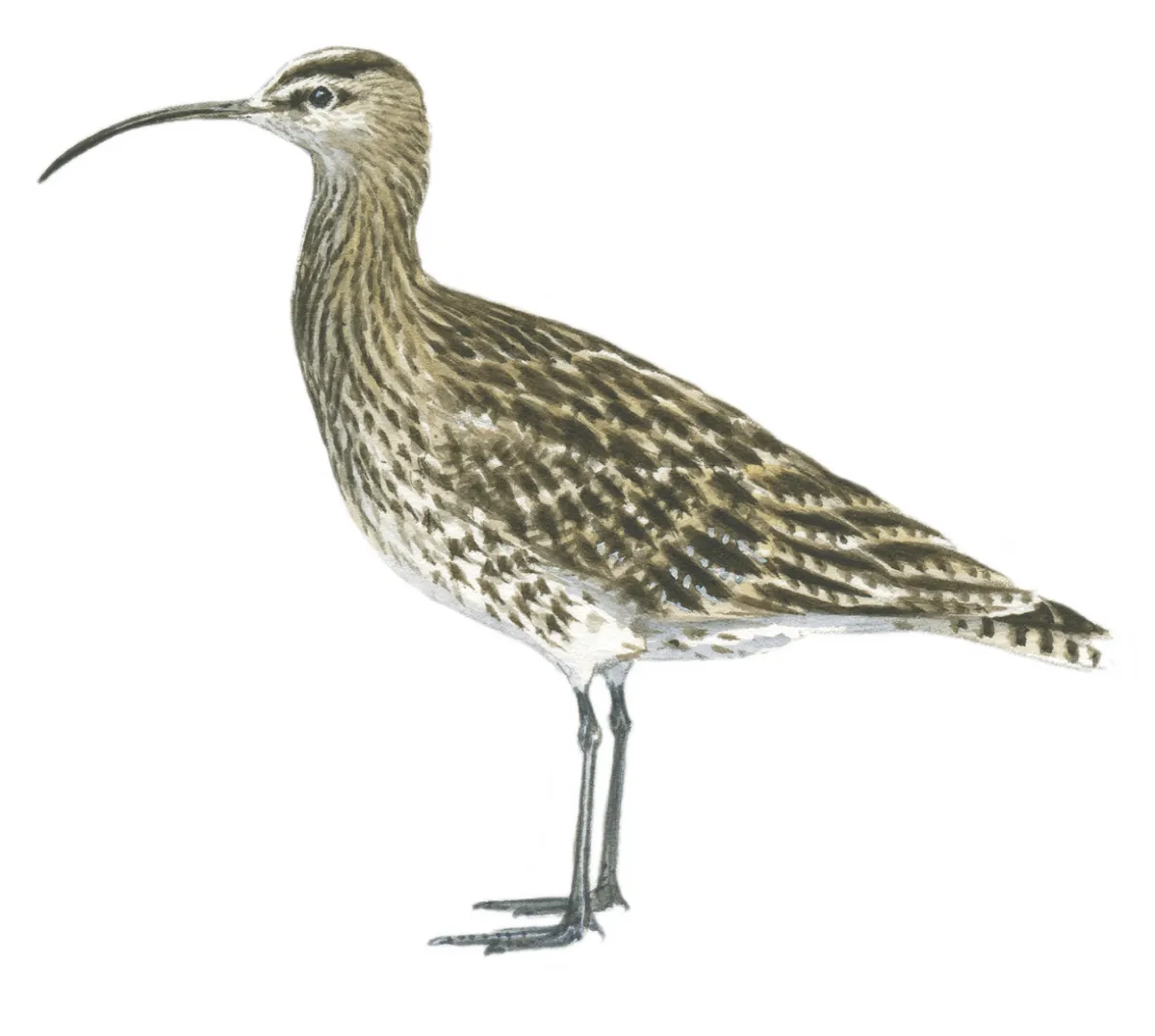
Scientific name: Numenius phaeopus
UK conservation status: Red
IUCN Red List status: Least Concern
Size: Smaller than the curlew - same size as an oystercatcher.
Bill: Bill is shorter than curlew and more abruptly bent at tip.
Plumage: Darker than curlew, with darker chest and some barring on flanks. Also confusable with bar-tailed godwits at a distance, but has a shorter neck. Compared to the curlew, it has a strong head pattern - the crown sports two dark bands separated by a narrower, pale centre stripe. Cleaner white rump and 'V' on back.
Legs: Shorter legs than curlew.
Call: Main call is very different from curlew - a rapid tittering series of very short whistles. At breeding grounds, it has a similar but briefer and 'inferior' song to curlew.
Behaviour: More active and often less wary than curlew, picking food from the surface as well as probing beneath it. Faster flight action; and it takes-off without a preliminary run.
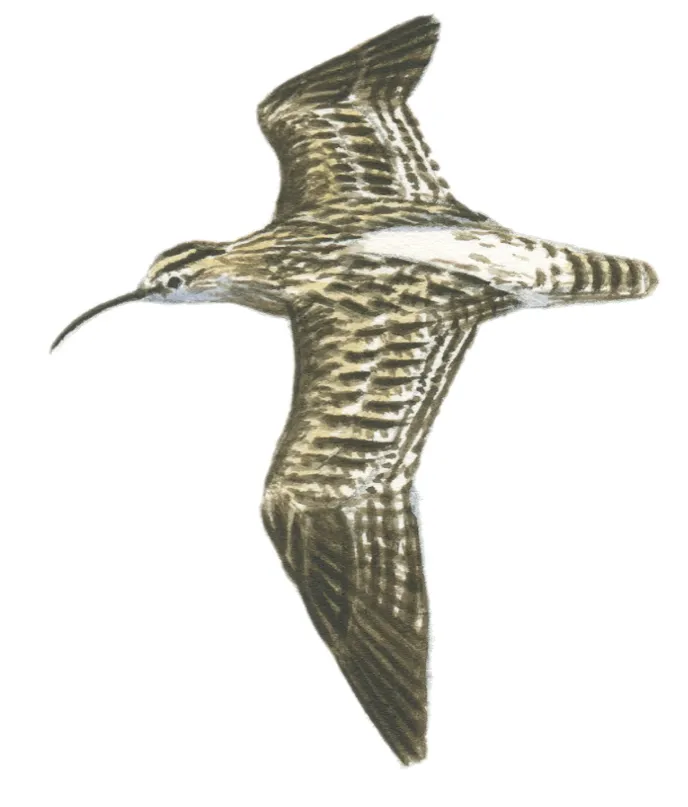
How many species of curlew are there?
There are eight species of curlew, although it is thought that two are possible extinct.
- The largest curlew species in the world is the far eastern curlew (pictured).
- Two species of curlew can be found in the UK - the Eurasian curlew (often shortened to curlew) and the whimbrel.
- The genus name Numenius refer's to the curlew's bill. Numenius comes from two Greek words, 'neos' meaning new and 'mene' for moon. This creates 'of the new moon', alluding to the crescent shape of the bill.
Click here to discover more fascinating facts about curlews.
